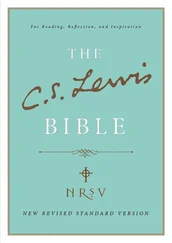Standard Template Library Programmer's Guide
Здесь есть возможность читать онлайн «Standard Template Library Programmer's Guide» весь текст электронной книги совершенно бесплатно (целиком полную версию без сокращений). В некоторых случаях можно слушать аудио, скачать через торрент в формате fb2 и присутствует краткое содержание. Жанр: Программирование, Справочники, на английском языке. Описание произведения, (предисловие) а так же отзывы посетителей доступны на портале библиотеки ЛибКат.
- Название:Standard Template Library Programmer's Guide
- Автор:
- Жанр:
- Год:неизвестен
- ISBN:нет данных
- Рейтинг книги:4 / 5. Голосов: 1
-
Избранное:Добавить в избранное
- Отзывы:
-
Ваша оценка:
- 80
- 1
- 2
- 3
- 4
- 5
Standard Template Library Programmer's Guide: краткое содержание, описание и аннотация
Предлагаем к чтению аннотацию, описание, краткое содержание или предисловие (зависит от того, что написал сам автор книги «Standard Template Library Programmer's Guide»). Если вы не нашли необходимую информацию о книге — напишите в комментариях, мы постараемся отыскать её.
Standard Template Library Programmer's Guide — читать онлайн бесплатно полную книгу (весь текст) целиком
Ниже представлен текст книги, разбитый по страницам. Система сохранения места последней прочитанной страницы, позволяет с удобством читать онлайн бесплатно книгу «Standard Template Library Programmer's Guide», без необходимости каждый раз заново искать на чём Вы остановились. Поставьте закладку, и сможете в любой момент перейти на страницу, на которой закончили чтение.
Интервал:
Закладка:
• InputIterator1 and InputIterator2 have the same value type.
• InputIterator 's value type is a model of LessThan Comparable.
• The ordering on objects of InputIterator1 's value type is a strict weak ordering , as defined in the LessThan Comparable requirements.
• InputIterator 's value type is convertible to a type in OutputIterator 's set of value types.
For the second version:
• InputIterator1 is a model of Input Iterator.
• InputIterator2 is a model of Input Iterator.
• OutputIterator is a model of Output Iterator.
• StrictWeakOrdering is a model of Strict Weak Ordering.
• InputIterator1 and InputIterator2 have the same value type.
• InputIterator1 's value type is convertible to StrictWeakOrdering 's argument type.
• InputIterator 's value type is convertible to a type in OutputIterator 's set of value types.
For the first version:
• [first1, last1) is a valid range.
• [first2, last2) is a valid range.
• [first1, last1) is ordered in ascending order according to operator< . That is, for every pair of iterators i and j in [first1, last1) such that i precedes j , *j < *i is false .
• [first2, last2) is ordered in ascending order according to operator< . That is, for every pair of iterators i and j in [first2, last2) such that i precedes j , *j < *i is false .
• There is enough space to hold all of the elements being copied. More formally, the requirement is that [result, result + n) is a valid range, where n is the number of elements in the union of the two input ranges.
• [first1, last1) and [result, result + n) do not overlap.
• [first2, last2) and [result, result + n) do not overlap.
For the second version:
• [first1, last1) is a valid range.
• [first2, last2) is a valid range.
• [first1, last1) is ordered in ascending order according to comp . That is, for every pair of iterators i and j in [first1, last1) such that i precedes j , comp(*j, *i) is false .
• [first2, last2) is ordered in ascending order according to comp . That is, for every pair of iterators i and j in [first2, last2) such that i precedes j , comp(*j, *i) is false .
• There is enough space to hold all of the elements being copied. More formally, the requirement is that [result, result + n) is a valid range, where n is the number of elements in the union of the two input ranges.
• [first1, last1) and [result, result + n) do not overlap.
• [first2, last2) and [result, result + n) do not overlap.
Linear. Zero comparisons if either [first1, last1) or [first2, last2) is empty, otherwise at most 2 * ((last1 – first1) + (last2 – first2)) – 1 comparisons.
inline bool lt_nocase(char c1, char c2) { return tolower(c1) < tolower(c2); }
int main() {
int A1[] = {1, 3, 5, 7, 9, 11};
int A2[] = {1, 1, 2, 3, 5, 8, 13};
char A3[] = {'a', 'b', 'B', 'B', 'f', 'H'};
char A4[] = {'A', 'B', 'b', 'C', 'D', 'F', 'F', 'h', 'h'};
const int N1 = sizeof(A1) / sizeof(int);
const int N2 = sizeof(A2) / sizeof(int);
const int N3 = sizeof(A3);
const int N4 = sizeof(A4);
cout << "Union of A1 and A2: ";
set_union(A1, A1 + N1, A2, A2 + N2, ostream_iterator(cout, " "));
cout << endl << "Union of A3 and A4: ";
set_union(A3, A3 + N3, A4, A4 + N4, ostream_iterator(cout, " "), lt_nocase);
cout << endl;
}
The output is
Union of A1 and A2: 1 1 2 3 5 7 8 9 11 13
Union of A3 and A4: a b B B C D f F H h
[1] Even this is not a completely precise description, because the ordering by which the input ranges are sorted is permitted to be a strict weak ordering that is not a total ordering: there might be values x and y that are equivalent (that is, neither x < y nor y < x ) but not equal. See the LessThan Comparable requirements for a more complete discussion. If the range [first1, last1) contains m elements that are equivalent to each other and the range [first2, last2) contains n elements from that equivalence class (where either m or n may be zero), then the output range contains max(m, n) elements from that equivalence class. Specifically, m of these elements will be copied from [first1, last1) and max(n-m, 0) of them will be copied from [first2, last2) . Note that this precision is only important if elements can be equivalent but not equal. If you're using a total ordering (if you're using strcmp , for example, or if you're using ordinary arithmetic comparison on integers), then you can ignore this technical distinction: for a total ordering, equality and equivalence are the same.
includes , set_intersection , set_difference , set_symmetric_difference , sort , merge
set_intersection
Category: algorithms
Component type: function
Set_intersection is an overloaded name; there are actually two set_intersection functions.
template
OutputIterator set_intersection(InputIterator1 first1, InputIterator1 last1, InputIterator2 first2, InputIterator2 last2, OutputIterator result);
template
OutputIterator set_intersection(InputIterator1 first1, InputIterator1 last1, InputIterator2 first2, InputIterator2 last2, OutputIterator result, StrictWeakOrdering comp);
Set_intersection constructs a sorted range that is the intersection of the sorted ranges [first1, last1) and [first2, last2) . The return value is the end of the output range.
In the simplest case, set_intersection performs the "intersection" operation from set theory: the output range contains a copy of every element that is contained in both [first1, last1) and [first2, last2) . The general case is more complicated, because the input ranges may contain duplicate elements. The generalization is that if a value appears m times in [first1, last1) and n times in [first2, last2) (where m or n may be zero), then it appears min(m,n) times in the output range. [1] Set_intersection is stable, meaning both that elements are copied from the first range rather than the second, and that the relative order of elements in the output range is the same as in the first input range.
Читать дальшеИнтервал:
Закладка:
Похожие книги на «Standard Template Library Programmer's Guide»
Представляем Вашему вниманию похожие книги на «Standard Template Library Programmer's Guide» списком для выбора. Мы отобрали схожую по названию и смыслу литературу в надежде предоставить читателям больше вариантов отыскать новые, интересные, ещё непрочитанные произведения.
Обсуждение, отзывы о книге «Standard Template Library Programmer's Guide» и просто собственные мнения читателей. Оставьте ваши комментарии, напишите, что Вы думаете о произведении, его смысле или главных героях. Укажите что конкретно понравилось, а что нет, и почему Вы так считаете.











